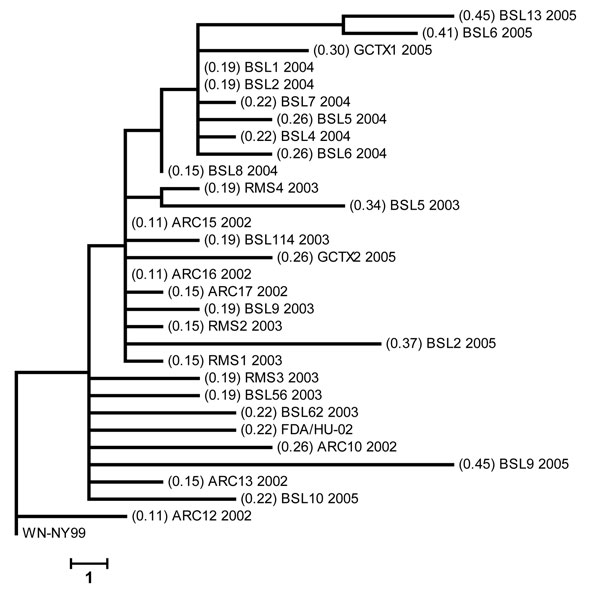Volume 14, Number 3—March 2008
Research
Genetic Variability of West Nile Virus in US Blood Donors, 2002–2005
Figure 1

Figure 1. Phylogenetic analyses based on maximum parsimony comparing the 2,685-bp nucleotide sequence, including the complete structural and the 5′-untranslated region of prototype West Nile virus (WNV) strain WN-NY99 with 30 WNV isolates collected during the 2002–2005 epidemics in the United States. Values in parentheses show percentage of nucleotide sequence divergence from WN-NY99. Scale bar represents a 1-nt change.
Page created: July 07, 2010
Page updated: July 07, 2010
Page reviewed: July 07, 2010
The conclusions, findings, and opinions expressed by authors contributing to this journal do not necessarily reflect the official position of the U.S. Department of Health and Human Services, the Public Health Service, the Centers for Disease Control and Prevention, or the authors' affiliated institutions. Use of trade names is for identification only and does not imply endorsement by any of the groups named above.